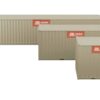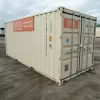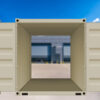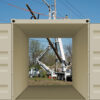Reliable Storage Container Rentals in Texas
Mesa Mobile provides secure, on-site storage containers across Texas, including the Dallas–Fort Worth area and surrounding cities. With a range of sizes and flexible rental terms, our containers are a dependable solution for storing tools, equipment, and inventory on location.
Built Tough: Premium Features of Our Storage Shipping Containers
10’ Storage Containers
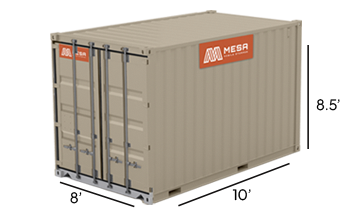
DETAILS
- External Dimensions: 10 ft. L x 8 ft. W x 8.5 ft. H
- Internal Dimensions: 9.25 ft. L x 7.6 ft. W x 7.8 ft. H
- Single Door: 7.6 ft. W x 7.4 ft. H
- Square Feet: 70 sq ft.
20’ Storage Containers
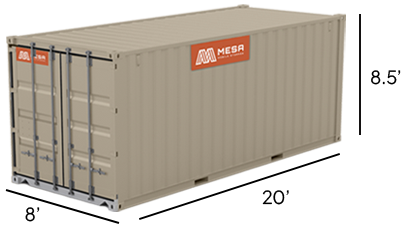
DETAILS
- External Dimensions: 20 ft. L x 8 ft. W x 8.5 ft. H
- Internal Dimensions: 19.4 ft. L x 7.6 ft. W x 7.8 ft. H
- Single Door: 7.6 ft. W x 7.4 ft. H
- Square Feet: 150 sq ft.
40’ Storage Containers
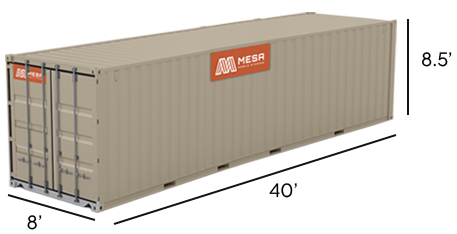
DETAILS
- External Dimensions: 40 ft. L x 8 ft. W x 8.5 ft. H
- Internal Dimensions: 39.25 ft. L x 7.6 ft. W x 7.8 ft. H
- Single Door: 7.6 ft. W x 7.4 ft. H
- Square Feet: 300 sq ft.
HI CUBE
- External Dimensions: 20 ft. L x 8 ft. W x 9.5 ft. H
- Internal Dimensions: 19.4 ft. L x 7.6 ft. W x 8.8 ft. H
- Single Door: 7.6 ft. W x 8.4 ft. H
- Square Feet: 300 sq ft.
20' TUNNEL (DOUBLE DOOR)
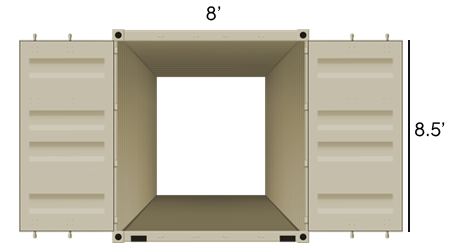
Details
Doors on both sides of the container for easy access
- External Dimensions: 20 ft. L x 8 ft. W x 8.5 ft. H
- Internal Dimensions: 19.4 ft. L x 7.6 ft. W x 7.8 ft. H
- Single Door: 7.6 ft. W x 7.4 ft. H
- Square Feet: 150 sq ft.
40' TUNNEL (DOUBLE DOOR)
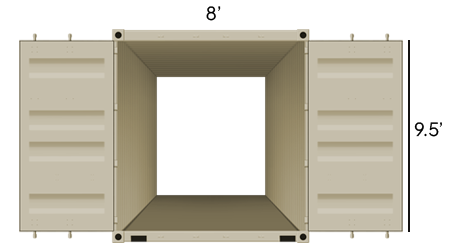
Details
Doors on both sides of the container for easy access
- External Dimensions: 40 ft. L x 8 ft. W x 9.5 ft. H
- Internal Dimensions: 39.25 ft. L x 7.6 ft. W x 8.8 ft. H
- Single Door: 7.6 ft. W x 8.4 ft. H
- Square Feet: 300 sq ft.
All Size Containers Include Heavy-Duty Locks for Security
Mesa Mobile containers come equipped with a high-security lockbox system, designed to resist tampering and unauthorized access. Our heavy-duty puck lock, enclosed in a reinforced steel housing, offers superior protection against bolt cutters and break-ins. With this robust locking mechanism, your stored items stay safe and secure on any job site.
Other Accessories
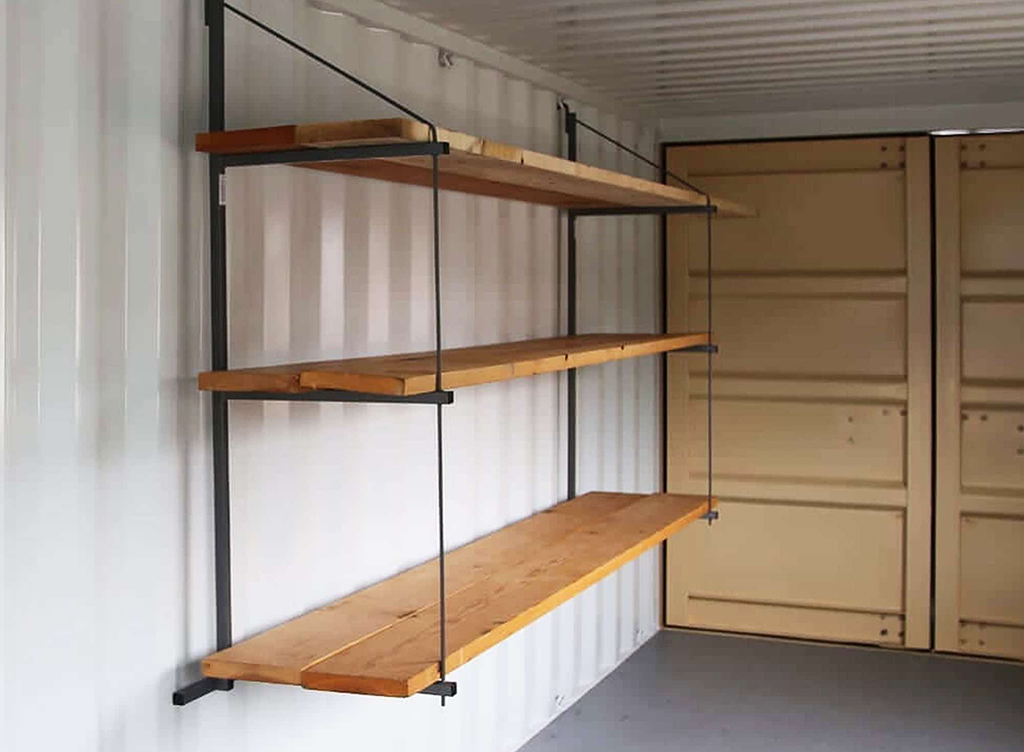
Shelving
Keep your things organized by using shelving units.
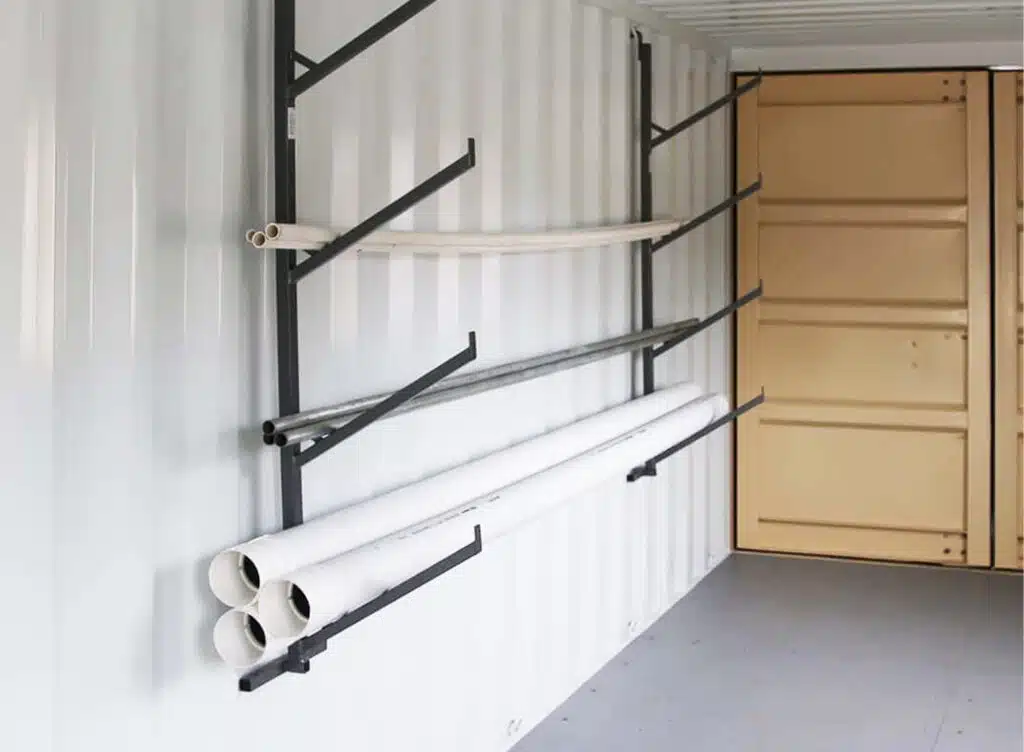
Pipe Racks
Store pipes or other long items using pipe racks

Ramps
Use ramps to make loading and unloading easy.
FAQs: Getting Ready for Your Storage Container Delivery
Q: Does a shipping container need to be placed on a foundation, or can it just be dropped on the ground?
A: While a container can be placed directly on the ground, it’s often recommended to use a foundation—especially if it will be on-site for more than six months. A foundation helps with drainage and keeps the container level during seasonal changes. Regardless, the delivery area should be clear and properly compacted before the container arrives.
Q: How should I prepare the site for a shipping container delivery?
A: Clear the delivery area ahead of time, making sure it’s free of obstructions. It’s helpful to mark or stake the exact location where you want the container placed so the driver can position it correctly and ensure it fits.
Q: Is the container being delivered to a business or a home?
A: Let your Mesa representative know whether the delivery site is commercial or residential. Provide recent photos and share any details that might affect access, such as overhead power lines, nearby buildings, or equipment. The more information you provide, the smoother the delivery process will be.
Q: Is there enough space for the delivery truck to maneuver?
A: You’ll need a clearance area about three times the length of the container. For example, a 40-foot container requires at least 120 feet of open space so the truck can unload and exit safely without hitting trees, fences, or other obstacles.
Q: Which way should the container doors face when delivered?
A: You can choose between two orientations. Doors to Cab: The container doors face the same direction as the truck. They will be the last part to touch the ground. Doors to Rear: The doors face the opposite direction of the truck cab and will land first. This setup is ideal when placing the container near a structure for easy access.
Q: How important is it to make sure the container is level?
A: Very important. The surface needs to be level to ensure the container sits properly. If it’s not level—especially at opposite corners—you may have trouble opening and closing the doors. Be sure to check door functionality during delivery.
Q: What’s the best way to ensure a smooth delivery process?
A: Clear, proactive communication is key. If you can’t be on-site during delivery, be reachable by phone in case the driver has any questions. A little preparation goes a long way toward making the delivery quick and hassle-free.
Get a Free Quote
Ready to rent a container with us? Request a quote today and our team will reach out to talk through your requirements, including container type, delivery details, and timeline. We’re eager to serve you.


